
(continuation)
|
ON:
And what about new species, have you found something? |
|
ON:
You have found two varieties in a species that has not a variety described
before it. Which are this species and the varieties?
Lou: Bletia catenulata alba which has never been registered along the centuries , I can say,since the genus has been described in l794. Bletia catenulata coerulea was another compensating and spectacular register. |
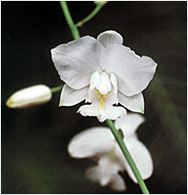 |
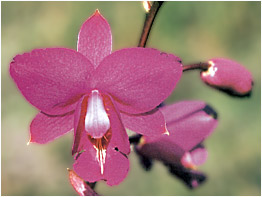 |
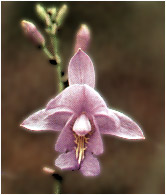 |
|
|
Bletia
catenulata alba |
Bletia
catenulata |
Bletia
catenulata coerulea |
|
ON: Is it all? Lou: No, I also found Cattleya nobilior var. alba which I have already described and published in Orquidário magazine, in 2001, and many others find in the book. ON: Bletia catenulata is found in the state of Rio de Janeiro, in "restinga" (sandbank) but also in Serra dos Órgãos (Organ Mountains) where occurs associated |
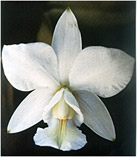 Cattleya nobilior var. alba |
|
to Phragmipedium vittatum, in so different conditions from those
found at the sea. In what conditions, it occurs in Central Plateau? Lou: It occurs between 800-1.400m altitude where the vegetation predominant is a kind of a grass and always exposed to annual fires during the dry period and it is a typical plant of hydromorphic soil. ON: That region, which is very rich concerning Cyrtopodium, can be |
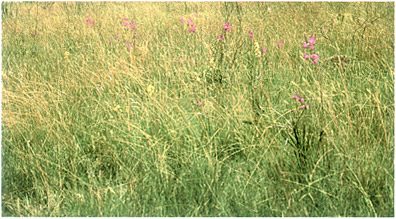 |
|
considered
as the center of the geographical distribution? Lou: No doubt about, the Central Plateau is the center of geographical dispersion of the genus Cyrtopodium. |
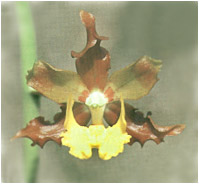 Cyrtopodium braemii |
ON:
In your last book (Cyrtopodium) there are at about 10 species recently
described by this time, as for example, Cyrtopodium braemii, caiapoense,
have you still came across to something new? Lou: I am preparing the 2nd. edition of my book on Cyrtopodium, since it is completely sold out many times ago. There will be news, wait. |
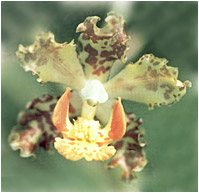 Cyrtopodium caiapoense |
ON: Cyrtopodium is the genus with most species in this habitat? Lou: I believe that is the genus we should point out however Habenaria is the most rich and the genus will be approach in another edition. ON: You mean, concerning the number of individuals, this genus is more present? Lou: That is, no doubt about, Habenaria. |
| ON:
So, the terrestrial orchids are predominant? Lou: Yes and the mean of terrestrial habit should be amplified and includes terrestrial, in the strict sense, paludicolous and even rupicolous. Besides Phragmipedium vittatum and many species of species of Cyrtopodium, there also are Bletia catenulata, Cleistes which grow in humid areas and more rare in dry lands. In the book, I included 5 species, Cranichis, Epistephium, Galeandra (as rupicolous and epiphyte), Houlettia, Eulophia alta, Liparis, Govenia, Lyroglossa, Prescottia (the plants of this genus are terrestrial but they can occur in trees or on rocks), Pteroglossaspis, besides those I have already mentioned. |
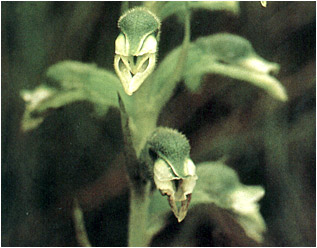 Pelexia
laminata
Pelexia
laminata |
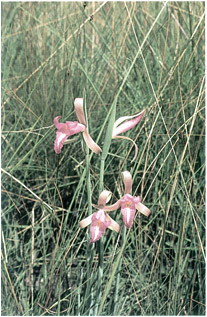 Cleistes castanoides |
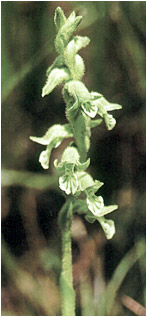 Lyroglossa grisebachii |
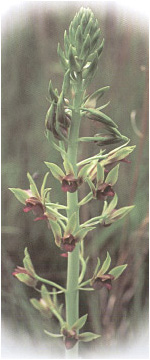 Eulophia alta |
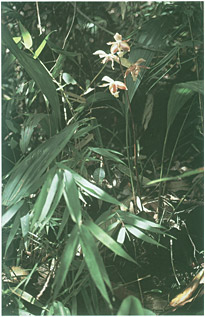 Houlletia juruensis (habitat) |
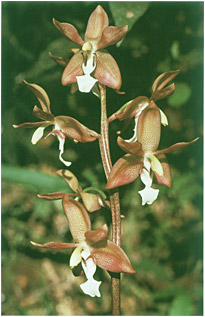 Houlletia juruensis |
ON: And Cyanaeorchis which was, in the past, included in the genus Eulophia or even as Arundina? Lou: This genus is purely Brazilian and is represented by the two only species which occur in the Central Plateau and included in the book. They are plants typically found in marshy and flooded habitats and always vegetating exposed to the sun, they emerge from the soil by the time of blooming and fructification but then they disappear until the new cycle of life starts, in the next year. |
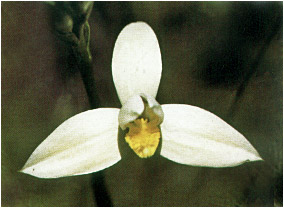 Cyanaeorchis arundinae |
|
ON:
Your study started with Phragmipedium vittatum, is it still abundant
in the region?
Lou: Phragmipedium vittatum is an abundant species, almost always found associate to the genus Cyrtopodium (some species), Epidendrum (some species), Bletia catenulata and Habenaria (some species). From the ecological standpoint, this species is threatened by the intensive and indiscriminate collecting which, in the past, ravaged populations and compromised the remaining plants, by the demographic expansion, by the air and water pollution which accelerate the pollution of the marshy habitats. ON: What about new occurrences for the region? Lou: There are some new occurrences for the genus Encyclia, Sarcoglottis and some other which will be a surprise for the readers of the book. ON: Which is the approach of the book? Lou: The book is entirely illustrated with pictures of the plants, flowers and habitats with an introduction to the genus . Concerning Phragmipedium vittatum, I also talk about the cultivation conditions, luminosity, watering, substrate, difficulties, remaining habitats, characteristics of those habitats, consequences of demographic expansion, pollution and indiscriminate collecting, etc... During my studies about Phragmipedium vitatum and many species of the genus Cyrtopodium, special attention has been given to ecological relationships of the habitats. The recurring bush fires which ravage the habitats during the dry period from June to September were one of the most interesting aspects. |
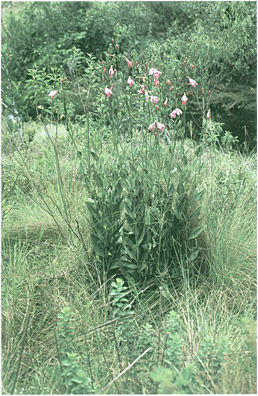
Epistephium lucidum |
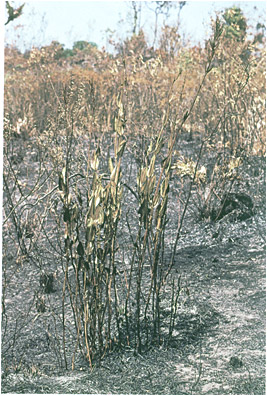
Epistephium lucidum (after fire) |
|
ON:
How far they are beneficial to the orchid and which are their ecological
effects? Lou: The importance of bush fires in relation to the ecology of terrestrial orchids has been the subject of careful observations by some researches. The fires have a selective effect and some plant families are specially benefited, between them, Orchidaceae family which grows, often, under adverse conditions, suffocated by the dominant vegetation - grasses - and this natural "cleaning" event finishes by being beneficial to those plants. In the habitats scorched by the bush fires, we have the impression that all live has been consumed forever. However, my studies showed that the great part of the plants of Phragmipedium vittatum and Cyrtopodium survive and the sprouts appear as soon as the first rains of the springtime arrive. The fire is beneficial, but it doesn't induce the blooming as said in some publications. It seems to be evident that, out of the habitat, in cultivation, Phragmipedium vittatum and Cyrtopodium species don't depend on the fire to bloom because they go on blooming every year. |
ON: So the effects are beneficial? Lou: Under certain conditions, they damage. In some areas, species of Cyrtopodium have their sprouts, their blooming and, as a result, their natural reproduction, by seeds, is almost completely interrupted by the burning of the new inflorescence. In this case, the species more hit is the Cyrtopodium eugenii Rchb. f. which blooming season coincides with the first bush fires of the plateau, during May and June. This subject has been approached in my book on Cyrtopodium. ON: Do you want to add something also about this book? Lou: Aware that the culture of a people is measured by their books and their libraries, in the context and in the field of the Brazilian orchid flora, the book "Orchids from the Brazilian Central Plateau " is a contribution to the knowledge about the orchids flora in the Central Plateau, specially, about those with terrestrial and paludicolous habit which are less known and studied. The orchid flora in this region is less known and studies, making my work unheard-of, a legacy to future generations. This book can be used as an easy and practical guide of identification for the great part of the species occurring in this region, specially in the plateau situated in Goiás. |
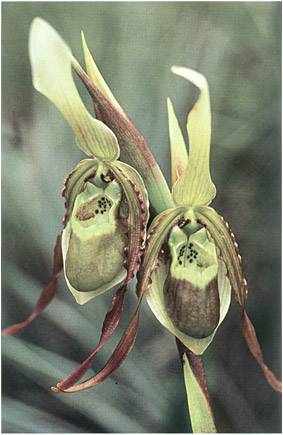 Phragmipedium vittatum |
|
All
photos are by Lou Menezes - ©Lou Menezes
|